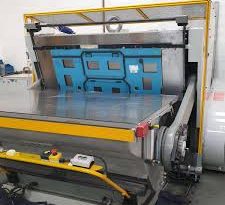Navigating the Costs of Die-Cutting Machinery for Efficient Production
Introduction: Die-cutting machinery is integral to industries such as printing, packaging, and textiles, where precision cutting of materials into specific shapes is crucial. The cost of die-cutting machinery can vary significantly based on several factors. Understanding these can help businesses make informed purchasing decisions that align with their production needs and budget constraints.
Factors Affecting the Pricing of Die-Cutting Machinery:
- Type of Machine:
- Die-cutting machines come in various types, including manual, semi-automatic, and fully automatic models, each with different pricing scales. Manual die-cutters are generally the most affordable, while fully automatic machines, which offer greater precision and higher speeds, are more expensive due to their advanced features.
- Production Capacity and Speed:
- Machines designed for higher production capacities and faster operation typically cost more. These machines are equipped with more robust motors and better components to handle the increased workload and speed, contributing to their higher price points.
- Complexity of Features:
- The complexity of the machine’s features, such as the ability to handle multiple materials, incorporate intricate cutting details, and quick changeover capabilities, can also impact the cost. More sophisticated machines that offer versatility and enhanced capabilities will generally be priced higher.
- Material and Build Quality:
- The durability and build quality of the machine play a crucial role in its pricing. Die-cutting machinery made with high-grade materials and engineered for longevity and minimal maintenance tends to be more expensive but offers better long-term value.
- Brand Reputation and Support Services:
- Established brands known for quality and reliability often price their machinery higher. However, these costs can be offset by the superior after-sales support, warranty terms, and the availability of spare parts and service, which can significantly reduce operational disruptions over the machine’s lifespan.
Price Range:
- The cost of die-cutting machinery can range from a few thousand dollars for simple manual machines to over a hundred thousand dollars for top-tier, fully automatic systems designed for continuous, heavy-duty use. The investment reflects the machine’s capabilities, the technology it employs, and the support provided by the manufacturer.
Making an Informed Purchase:
- Assess Your Needs: Evaluate the specific requirements of your operations, including the types of materials you need to cut and the volume of production. This assessment will help determine the most suitable machine type.
- Consider Total Cost of Ownership: Factor in maintenance costs, potential downtime, and the efficiency of operations when calculating the total cost of ownership. A more expensive machine that offers lower operating costs and higher reliability may provide a better return on investment in the long run.
- Compare and Contrast: Research various models and brands to compare their features, benefits, and prices. Consider seeking testimonials or case studies from current users to gauge performance and satisfaction.
Conclusion: Investing in die-cutting machinery requires careful consideration of various factors, including machine type, capabilities, build quality, and the reputation of the manufacturer. By understanding these factors, businesses can ensure they choose a machine that not only fits their budget but also enhances their operational efficiency and production quality. Making a well-informed decision will help optimize the return on investment and support long-term business growth.



